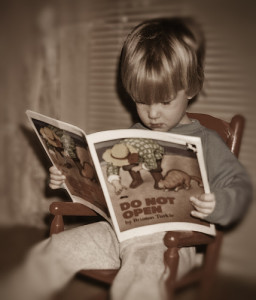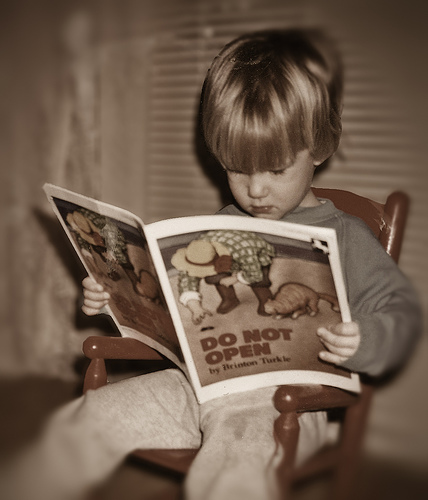[This is a guest post by Emily Joseph]
Do you know that one in four children has a problem with her vision that could be affecting her ability to learn? That’s according to the American Optometric Association, which also says that many eye problems aren’t detected during routine exams.
 Does that mean that you should just skip these exams? Of course not. What it means is that you have to be even more vigilant and keep your own eyes peeled for signs that there could be a problem. Here are 9 signs to watch out for:
Does that mean that you should just skip these exams? Of course not. What it means is that you have to be even more vigilant and keep your own eyes peeled for signs that there could be a problem. Here are 9 signs to watch out for:
1) A Head Tilt
Most of us probably wouldn’t think much about it if we noticed that our child tended to tilt his or her head one way or the other, or if one shoulder was consistently higher. But experts say that this can be a sign of undetected problems that lead to them favoring one eye over the other.
2) Poor Hand-Eye Coordination
You thought it was your own clumsiness that was preventing junior from ever hitting the ball, but maybe there’s more to it than genetics? Poor hand-eye coordination can be a result of not clearly seeing or being able to judge things like distance.
3) Losing their Place
Do you often find that your child takes longer than normal to find their place when you interrupt them in their reading? This could be because they’re not able to read the words clearly enough and it’s hard for them to get back to where they were without starting over.
4) Difficulty with Shapes
When you can’t see very well, circles and squares tend to look pretty similar. If your child just can’t seem to tell them apart, maybe it’s because they really can’t see the differences between them.
5) Motion Sickness
When the world is a blur or we have to concentrate really hard to focus, it’s easy to feel nauseous or dizzy if we try to look around and move at the same time. While a certain amount of motion sickness is fairly common, if your child seems to experience this symptom frequently, you may want to have the doctor check their vision.
6) Finger Reading
Sometimes kids use their fingers to trace the words in books because they can’t differentiate between the words enough to keep their place unless they do. Take note of this if you notice it.
7) Head Following
People with normal, healthy vision tend to follow objects with their eyes. But when moving our eyes causes us to need to refocus because things get visually confusing or blurry, sometimes we develop a natural response of turning our heads so that our eyes can remain still. Alert your doctor if you notice this.
8) Skipping and Omitting
Though all of us read over or past words sometimes, kids who do this on a regular basis may want to have their eyes examined because one of the signs of vision problems is that you just “miss” things that you should see.
9) Eye-Rubbing
When you can’t see well, looking at things—and especially reading and writing—is an exhausting chore. If you see your child rubbing his or her eyes after even short reading sessions, it could be a sign that there’s an issue.
Obviously these aren’t even close to all of the signs that could point to an eye problem. The best thing that you can do is to pay attention to your child and anything that seems difficult for them. The earlier you catch the problem, the better.
About the author:
Emily Joseph is a writer for QualSight Lasik. When Emily is not writing or reviewing LASIK doctors, she spends her time away from work educating herself about age related eye problems and spending free time with her boyfriend.
photo credit: Lori Greig
